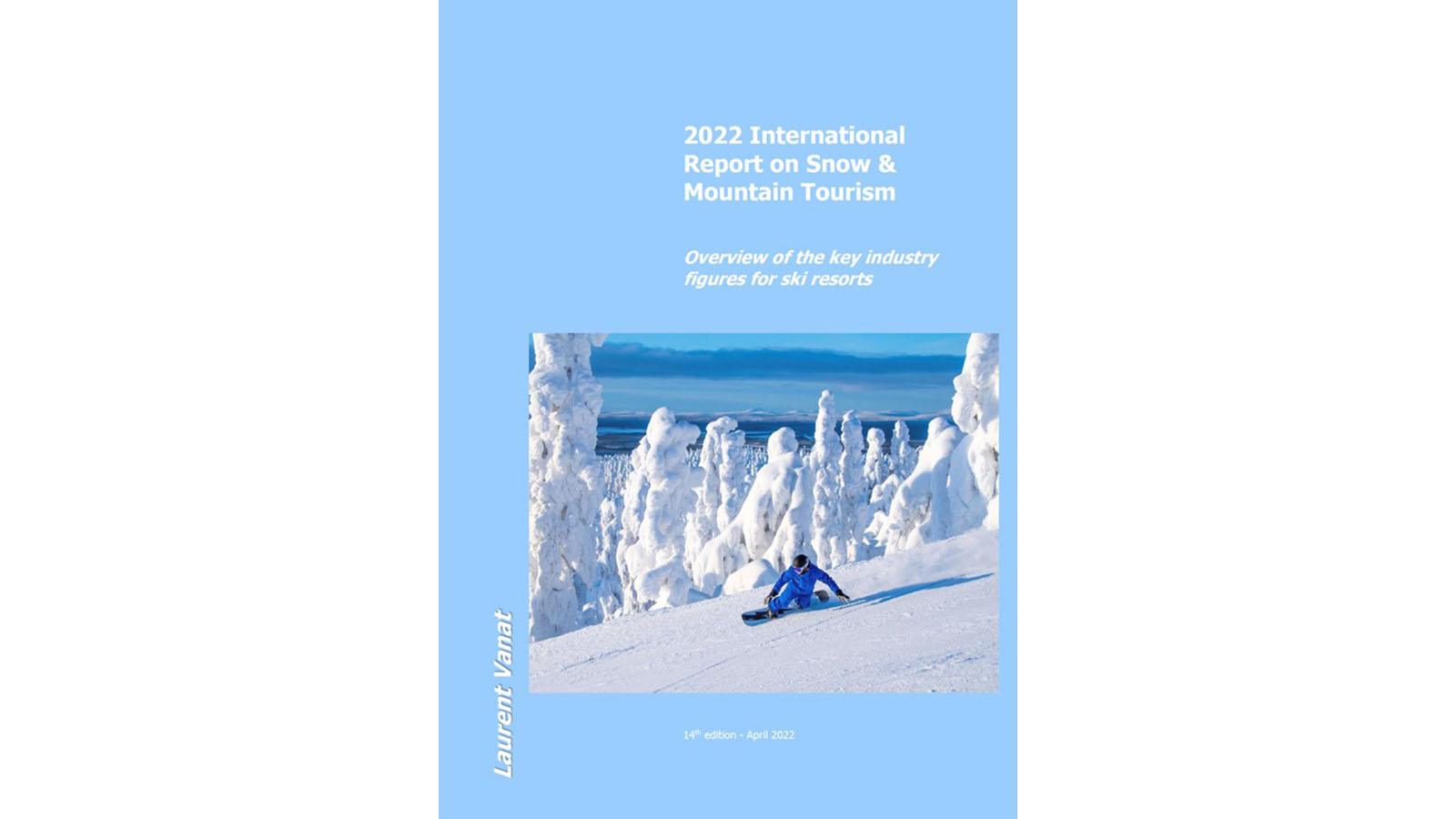
2022 International Report on Snow & Mountain Tourism Shows Impact of Covid & Travel Restrictions
In summary, the 2022/21 winter season in Europe has been one of the worst since the turn of the millennium. However, some countries around the world had better news to report. The 14th edition of the International Report on Snow & Mountain Tourism takes a deep dive into how winter businesses faired during the 20/21 season.
Press Release:
The 2022 International Report on Snow & Mountain Tourism has just been unveiled during the opening conference of Mountain Planet International Exhibition in Grenoble on April 26, 2022. This 14th edition of the report presents winter 2020/21, a season as the industry never experienced so far. It was full of contrasts, as some countries kept their resorts completely closed for the whole winter because of Covid-19 pandemic while some other countries enjoyed a very positive season. This is of course reflected in completely unusual numbers.
After the previous season was abruptly interrupted in most parts of the world by Covid-19 outbreak, winter season 2020/21 has brought huge challenges for the ski resorts around the world. With the developments of new waves and new variants of the pandemic, governments have been forced to edict numerous restrictions and sometimes lockdown measures. In many countries, panic reactions facing the uncertainty were however avoided as far as ski resorts were concerned. Preventive measures were organized, often proactively by the industry itself. They allowed some countries to experience quality ski seasons and, in some places, attendance records reached high levels despite of the restrictions. Nowhere, the operation of ski resorts generated the appearance of Covid-clusters that spread throughout countries.
Despite lifts were heavily locked-down in only 6 countries of the 68 that feature open air ski resorts, the closure of ski resorts in most of the Alpine countries had a tremendous impact on global visitation figures. It temporarily changed completely the ranking in the ski markets, with China ending up at the second place as far as 2020/21 skier visits are concerned, after United States, but just before Japan and Switzerland (as Austria, France and Italy, which usually occupy the top ranks, were partly out of the game).
After previous ski season was already reported as the worst season of the current millennium, with 319.5 million skier visits worldwide, the lockdown of Alpine ski areas led to an even worse figure of 201.2 million skier visits for 2020/21.
The global impact of the pandemic and related restrictions over 2020/21 winter season attendance thus translated into a decrease of 37% in skier visits over the globe (to former shortened season 2019/20, which was already down 18% to former one). The highest impact was of course experienced in the Alpine countries, where the decline reached 78%. In other European destinations and Central Asia, the decline was limited around 32%. With the recovery of China, Asia Pacific region showed a 17% increase. The very good season in United States brought also America up 11%.
Beside this very contrasted picture, some other highlights also marked the 2020/21 winter.
- The season was longer than usual in several places, with some ski resorts in countries like Switzerland and Slovenia still open in June, when these resorts are usually closed. Despite the lockdown in France lasted up to end of May, a couple of ski resorts there managed to offer special week-end openings end of May or beginning of June to a limited number of guests, as they still had unusual amounts of snow on their slopes.
- Travel restrictions abroad has supported the growth in domestic visitation to levels yet unreached in some Eastern countries. Russia and Romania had their ever-best seasons in 2020/21.
- United States recorded a new enthusiasm of its population for skiing. The industry got there more than 1 million new or returning participants, returning to levels that were usual during the first decade of the century.
- Comforted by the pandemic restrictions, the advanced purchase model, together with multi-resorts season passes and the wider adoption of dynamic pricing continued to shape some transformation of the traditional tickets sale business model and increase the reliability of the revenue base.
The industry has remained dedicated to delivering extraordinary experiences to the skiers and will be trying even harder over the next years, together with the hope that 2022 Winter Olympics will bring further fruits China ski business.
Coverage: There are currently 68 countries in the world that offer equipped outdoor ski areas covered with snow. Even if snowfields are much more numerous, about 2’000 ski resorts have been identified worldwide. Besides the major ski destinations in terms of skier visits, there are a number of other, smaller destinations, where skiing has been an industry for a long time, or is currently developing. The most obvious emerging destinations are Eastern Europe and China, but there are a number of other small players spread out across the globe: Cyprus, Greece, India, Iran, Israel, Lebanon, Lesotho, Morocco, New Zealand, Pakistan, South Africa, Turkey and many more.
Laurent Vanat: Besides his personal involvement in the sector of snow & mountain tourism, Laurent Vanat runs his own consulting firm specialized in business planning and management, Laurent Vanat Consulting Ltd. Laurent Vanat has been invited to present his report at various international meetings, including the OITAF Congress in Rio, those of the WTO in Andorra, Almaty, Tbilisi and Ulsan, Asia Pacific Snow Conference – ALPITEC/ISPO in Beijing, Mountain Planet in Grenoble, IMTA annual conference in Guiyang, various meetings of the FIS and the meetings of Grand Ski in Chambéry, among others.
Free access to the full report is currently limited to its contributors and the supporters of its crowdfunding campaign. Hard copies of the report can be purchased online through the website of the author – www.vanat.ch








